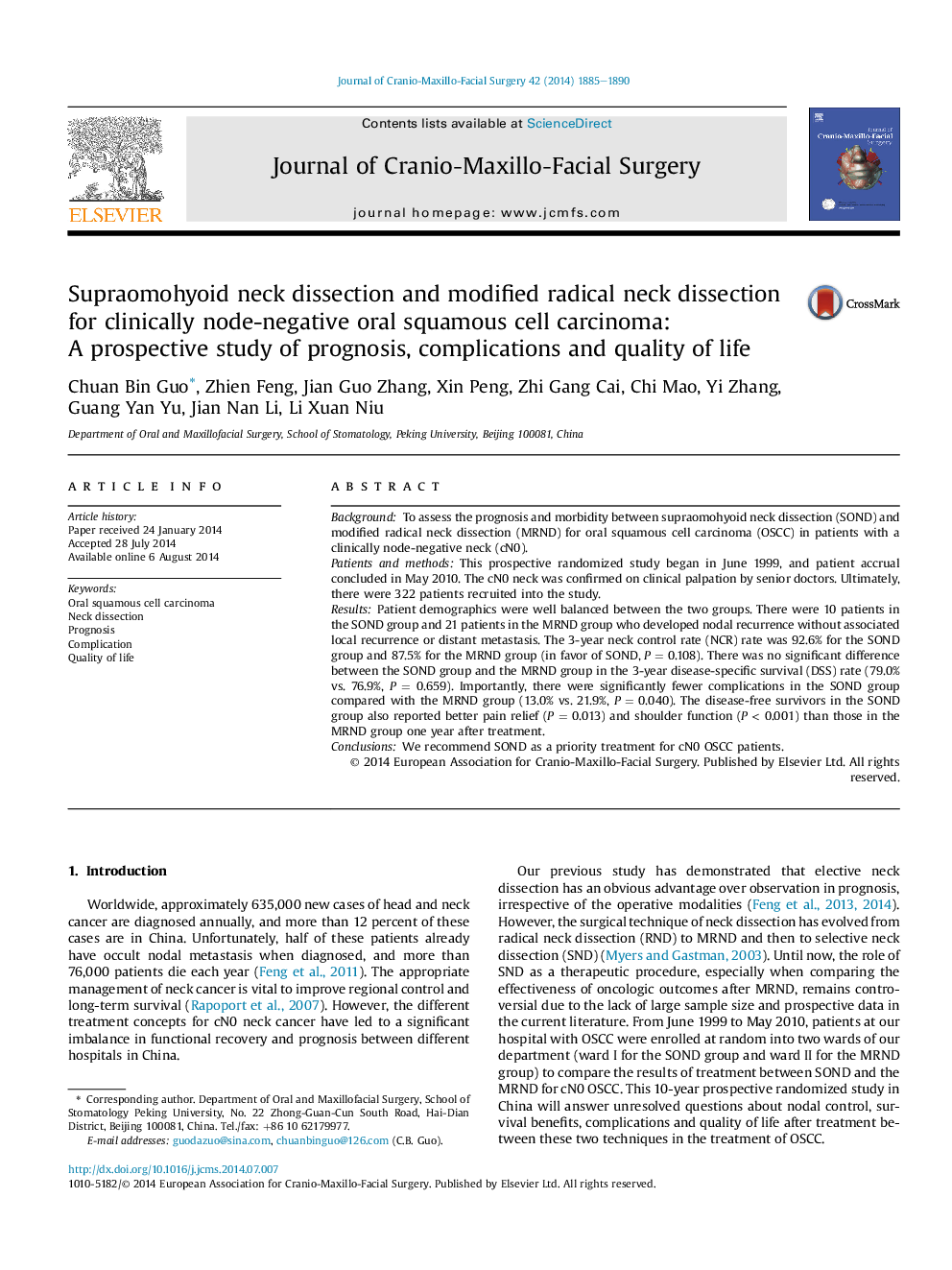| Article ID | Journal | Published Year | Pages | File Type |
|---|---|---|---|---|
| 3142759 | Journal of Cranio-Maxillofacial Surgery | 2014 | 6 Pages |
BackgroundTo assess the prognosis and morbidity between supraomohyoid neck dissection (SOND) and modified radical neck dissection (MRND) for oral squamous cell carcinoma (OSCC) in patients with a clinically node-negative neck (cN0).Patients and methodsThis prospective randomized study began in June 1999, and patient accrual concluded in May 2010. The cN0 neck was confirmed on clinical palpation by senior doctors. Ultimately, there were 322 patients recruited into the study.ResultsPatient demographics were well balanced between the two groups. There were 10 patients in the SOND group and 21 patients in the MRND group who developed nodal recurrence without associated local recurrence or distant metastasis. The 3-year neck control rate (NCR) rate was 92.6% for the SOND group and 87.5% for the MRND group (in favor of SOND, P = 0.108). There was no significant difference between the SOND group and the MRND group in the 3-year disease-specific survival (DSS) rate (79.0% vs. 76.9%, P = 0.659). Importantly, there were significantly fewer complications in the SOND group compared with the MRND group (13.0% vs. 21.9%, P = 0.040). The disease-free survivors in the SOND group also reported better pain relief (P = 0.013) and shoulder function (P < 0.001) than those in the MRND group one year after treatment.ConclusionsWe recommend SOND as a priority treatment for cN0 OSCC patients.
